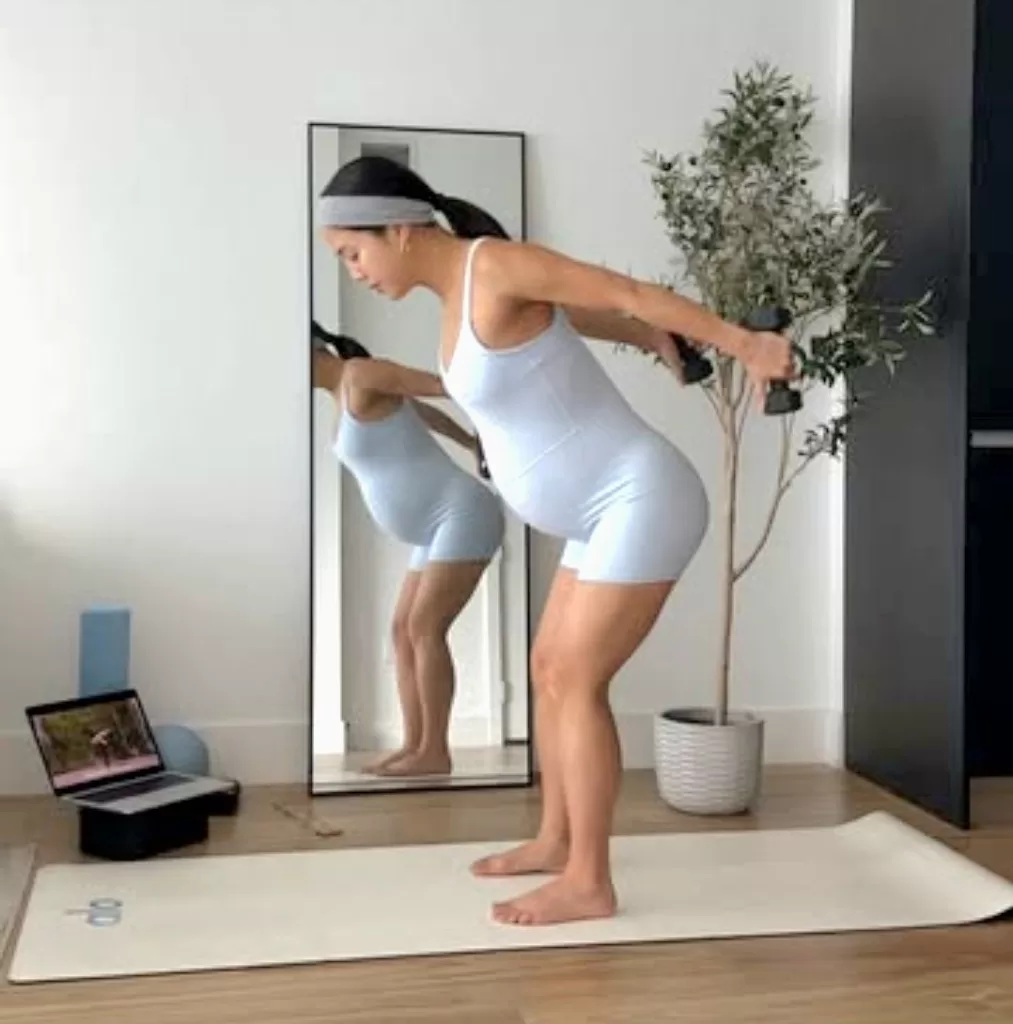Exercise during pregnancy, Importance of Staying Active

Exercise during pregnancy is like a magic potion—it supports your physical and mental health, eases some common pregnancy discomforts, and helps prepare your body for childbirth. Staying active can improve your mood, energy levels, and sleep quality. It can also help reduce pregnancy-related issues such as back pain, swelling, and constipation. Regular exercise strengthens muscles and improves endurance, which is beneficial for labor and delivery. Plus, it can aid in a quicker postpartum recovery.
Safe and Effective Exercises During Pregnancy
1. First Trimester
In the first trimester, the goal is to maintain your current fitness level and establish a routine. Stick to low-impact activities and listen to your body’s cues.
Walking Walking is a fantastic, low-impact exercise that you can do throughout your entire pregnancy. It’s easy, accessible, and you can adjust the pace to suit your energy levels.
Swimming Swimming and water aerobics are great options because the buoyancy of water supports your weight, reducing strain on your joints. It also provides a full-body workout.
Prenatal Yoga Prenatal yoga focuses on flexibility, strength, and relaxation. It’s excellent for easing tension and teaching breathing techniques that will be useful during labor.
2. Second Trimester
The second trimester is often the most comfortable for exercise. Your energy levels are higher, and morning sickness usually subsides.
Strength Training Light strength training can help maintain muscle tone and support your changing body. Focus on using light weights or resistance bands and avoid heavy lifting.
Pelvic Floor Exercises (Kegels) Strengthening your pelvic floor muscles can prevent urinary incontinence and aid in labor. Kegels involve tightening and holding your pelvic floor muscles as if you’re stopping the flow of urine.
Prenatal Pilates Prenatal Pilates helps improve core strength, posture, and flexibility. It’s beneficial for maintaining balance as your center of gravity shifts.
3. Third Trimester
In the third trimester, the focus is on preparing your body for labor while staying comfortable.
Squats Squats are excellent for strengthening your pelvic floor and leg muscles, and they can help open your pelvis, making labor easier.
Cat-Cow Stretch This yoga pose helps alleviate back pain and improves spinal flexibility. Get on all fours, arch your back like a cat (Cat pose), then lower your belly and lift your head and tailbone (Cow pose).
Walking and Prenatal Yoga Continue with walking and prenatal yoga to maintain flexibility and endurance.
Exercises to Prepare for Labor
As you approach your due date, certain exercises can help your body get ready for labor.
1. Pelvic Tilts Pelvic tilts can strengthen your abdominal muscles and relieve back pain. They also help position your baby correctly for birth. Stand with your back against a wall, flatten your lower back against the wall, hold for a few seconds, and release.
2. Squats Squats can help open your pelvis and strengthen your lower body. Stand with your feet shoulder-width apart, lower into a squat position as if you’re sitting back into a chair, hold for a few seconds, and rise back up.
3. Perineal Massage While not exactly an exercise, perineal massage can help prepare your perineum for childbirth by increasing its elasticity. Start about six weeks before your due date, using a lubricant and gently massaging the perineal area.
4. Birthing Ball Exercises Using a birthing ball can help open your pelvis and encourage your baby to move into the correct position for birth. Sitting and gently bouncing on the ball, doing hip circles, and leaning forward onto the ball are all beneficial movements.
Exercises to Avoid During Pregnancy
Just as there are exercises that benefit you during pregnancy, there are also those that are best avoided to ensure the safety of both you and your baby.
1. High-Impact Sports Activities like basketball, soccer, or any sport that involves a risk of falling or physical contact should be avoided. The risk of injury is too high, and it’s important to protect both you and your baby.
2. Heavy Weightlifting Lifting heavy weights can strain your joints and muscles, which are already under increased pressure due to pregnancy. Stick to light weights and focus on controlled, low-impact movements.
3. Exercises Involving Lying Flat on Your Back After the first trimester, avoid exercises that require you to lie flat on your back. This position can compress the vena cava, a major vein that returns blood to your heart, and can reduce blood flow to your baby.
4. Deep Twists or Inversions Deep twisting poses or inversions (where your head is below your heart) can cause dizziness and are best avoided. These movements can also increase the risk of losing your balance, which is crucial to avoid as your belly grows.
5. High-Intensity Interval Training (HIIT) While HIIT can be a great workout, its high-intensity nature can be too strenuous during pregnancy. Stick to moderate-intensity exercises to ensure you’re not overexerting yourself.
6. Hot Yoga or Hot Pilates Exercise in extreme heat can raise your core body temperature to dangerous levels for you and your baby. Stick to regular prenatal yoga classes in a comfortably cool environment.
7. Scuba Diving Scuba diving is off-limits during pregnancy due to the risk of decompression sickness, which can harm your baby. Snorkeling in calm waters is a safer alternative if you want to enjoy underwater activities.
Personal Experience and Tips
During my pregnancy, I found that modifying my exercise routine to avoid high-risk activities made a big difference in how comfortable and safe I felt. Walking, prenatal yoga, and swimming became my go-to exercises. As my belly grew, I avoided lying flat on my back and opted for side-lying stretches instead. Listening to my body and adapting my workouts helped me stay active and healthy throughout my pregnancy.
Remember, always consult with your healthcare provider before starting any new exercise regimen during pregnancy. Every woman’s body and pregnancy are unique, so it’s important to get personalized advice.
In summary, staying active during pregnancy is incredibly beneficial for your physical and mental health. It helps ease discomforts, prepares your body for labor, and supports a quicker postpartum recovery. Incorporate safe and effective exercises into your routine, avoid high-risk activities, and enjoy the journey to motherhood with confidence and strength. Your body is doing incredible work, and keeping it active and healthy will help you and your baby thrive.
